NYC’s Forgotten ‘War on Christmas Trees’
Discover how an obscure holiday crackdown affects festive street vendors today!


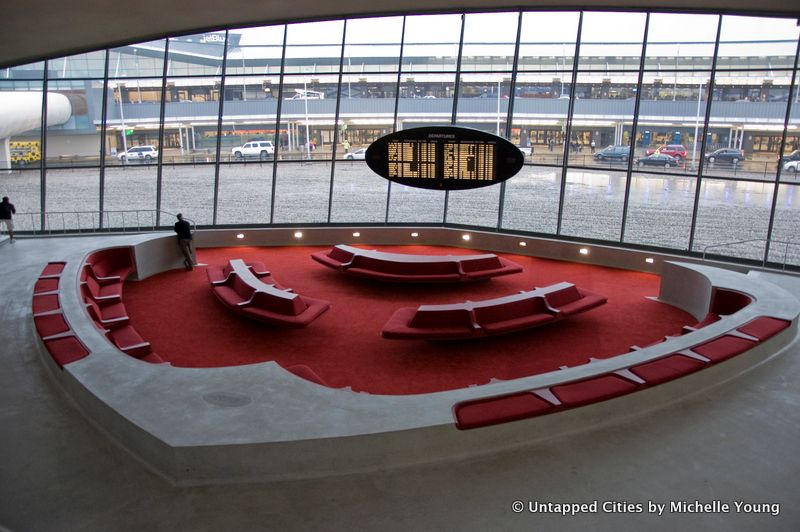
The Untapped Cities team is headed on a trip soon, which has us thinking about the secrets of New York City’s essential infrastructure. If you’re flying internationally especially, but also domestically, you’ve definitely experienced the ups and downs of John F. Kennedy Airport. The next time you’re stuck in the line for security or trying to get out of customs, read up on these 10 fun facts. It just might make your trip to JFK Airport a little more tolerable.
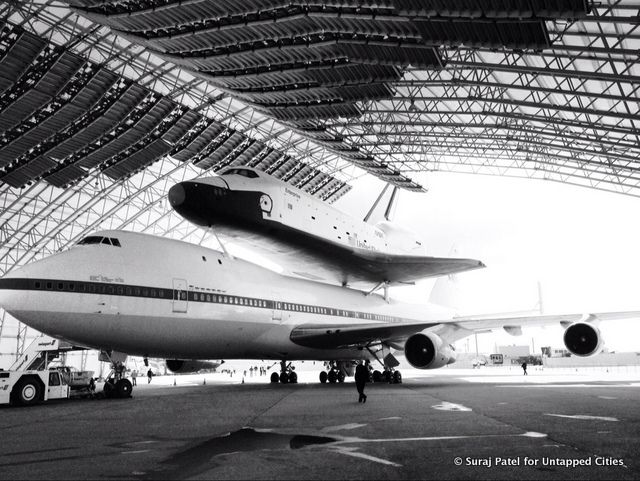
The Bay Runway (31L), the second longest runway in the United States, is also a backup space shuttle landing spot. The primary runway for NASA at the Space Shuttle Facility is only 428 feet longer than the Bay Runway. See photos of the Space Shuttle Enterprise at JFK Airport before its move to the Intrepid Air and Space Museum.

What we now know as John F. Kennedy International Airport was constructed as Idlewild Airport in 1942 on top of the Idlewild golf course in Queens. The project was undertaken to relieve LaGuardia Airport (built in 1939) of some of its traffic, as it quickly became too crowded. The original plans called for a modest 1,000 acre airport, but by the time construction was finished, the airport had grown to 4,930 acres with over thirty miles of roadway. Commercial flights began in July 1948.
In 1943, the airport was actually renamed Major General Alexander E. Anderson Airport after the Queens resident who had commanded the Federalized National Guard. In 1948, the City Council renamed it New York International Airport, Anderson Field, but people continued to call it Idlewild. On December 24, 1963, just over a month after the president was assassinated, the airport joined the ranks of so many other buildings and was renamed John F. Kennedy International Airport in his honor.
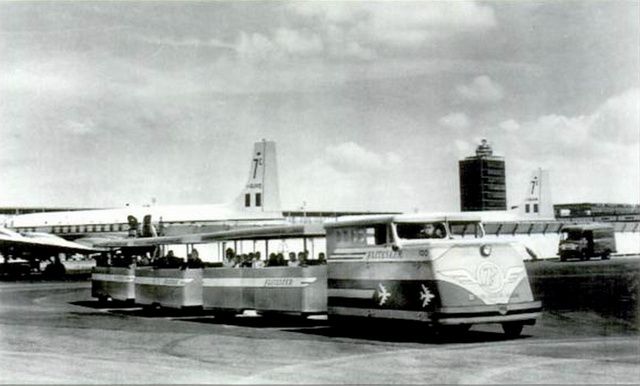
Way before the AirTrain, there was a tourist tram run by the Port Authority called the Fliteseer which brought intrepid people to check the behind-the-scenes at JFK Airport. According to the book John F. Kennedy Airport by Joshua Stoff, you could “ride down the entire length of the flightline during operational periods” in the Fliteseer. Service was ended in 1960s with the rise in security concerns.
A last fun finds if you’re in Terminal 4 is the sculpture designed to “alleviate stress.” And our favorite functional secret of JFK Terminal is that you can buy a 10-pass AirTrain and save 50%.

As the needs for air travel changed from the Jet Age to today, the first terminals to grace JFK Airport would be demolished and replaced by new ones. The Worldport Terminal (above), an icon of this era, was designed as a showcase and hosted several historic moments:(the first home of the Boeing 707 and where The Beatles departed from America in 1964. In 2013, as the terminal was deteriorating though still in use, Delta decided to demolish it for airplane parking.
A Modernist terminal by I.M. Pei, a fabulous mid-century American Airlines terminal, the original International Arrivals Building (along with the control tower), and the original United Airlines building are also gone, among others. Take a look at these lost terminals, including the first temporary terminal at the airport, here. The final remaining Jet Age terminal, Terminal 2, was shuttered in January 2023 and set for demolition to make way for a new terminal.

Every curve and detail of the TWA Flight Center was thought out by architect Eero Saarinen, with the terminal being one of his last works, completed posthumously. The National Trust for Historic Preservation was a partner in the effort to save it from the wrecking ball in 2003. Upwards of 14 agencies are involved in the preservation and adaptation of the flight center, which will become a hotel, appropriately called The TWA Flight Center Hotel. New wings will be built for the rooms so the original space will not be tampered with).
James Steven, manager of JFK Physical Plant and Redevelopment tells us of the painstaking renovation he has overseen with Beyer Blinder Belle, down to the details of each circular tile and the years of sourcing materials all over the globe. See more photos inside the TWA Flight Center, including areas off-limits to the public even during Open House New York weekend.

Sometimes real life is as strange as a movie. JFK Airport was the site of the largest robbery of cash on American soil: the Lufthansa heist, featured in Martin Scorcese’s Goodfellas. In December 1978, thieves from the Lucchese crime family snuck into cargo building 261 at 3 a.m. Just over an hour later, they got away with $5 million in cash and $875,000 in jewelry, a combined $21 million in today’s money.
After the heist, organizer Jimmy “The Gent” Burke ordered the murder of many of the participants in order to keep them quiet. He was later convicted of one of those murders and sentenced to life in prison. See more of NYC’s most notorious crime scenes.
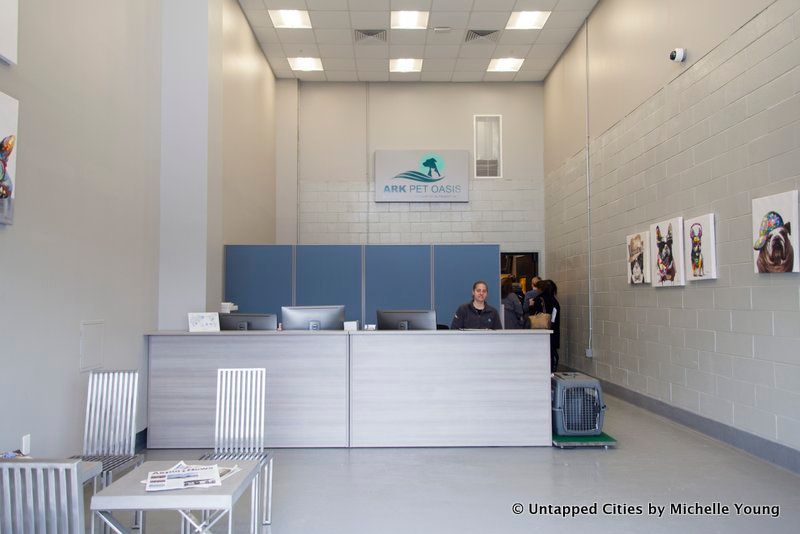
With JFK Airport‘s $65 million pet terminal, The ARK, our furry friends and live animal cargo can travel in luxury (and safety). The ARK is considered to be the world’s first privately owned, 24-hour animal terminal and airport quarantine center. Located in Cargo Building 78 in area D, in a facility shared by Air France, Alitalia and KLM, the 88,000 square foot pet terminal took two years for design and construction, replacing an existing pet facility from 1951 that was in a state of major disrepair. It is located on 14.5 acres of land, one of the largest plots at the airport, and developed in response to an RFI by the Port Authority of New York and New Jersey. See photos of the pet terminal here.


The only hotel, a Ramada Plaza, on the property of JFK Airport itself was nicknamed the Heartbreak Hotel, but not because of its current abandoned state. It gets its nickname because it housed so many relatives of victims of plane crashes in the 1990s and 2000s.
Citing a need for cost savings and renovation at the site, the Port Authority closed the Ramada in 2009, with plans to open a new hotel elsewhere at the airport. In 2014, it was reported that labor issues had stalled plans to redevelop the hotel. For now, you can see this abandoned hotel when you ride the AirTrain.

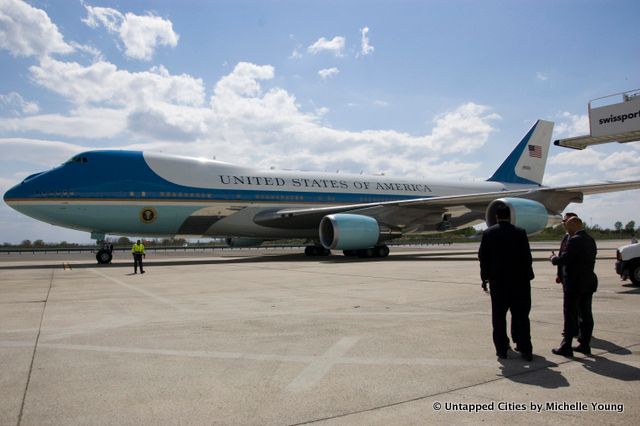
In an area of JFK Airport only accessible to the military is the runway that also functions as the take off and landing runway for Air Force One. In addition to military hangars, a receiving line is also set up for arrivals. Check out our photo series on President Barack Obama’s arrival to JFK Airport in 2013.

Hangar 17, once home to Pan American and Tower Air, was the storage facility for 9/11 artifacts en route to the 9/11 Museum and Memorial. The book, Memory Remains: 9/11 Artifacts at Hangar 17 is a photo book by Francesc Torres, who was granted access to photograph the items in the hangar.
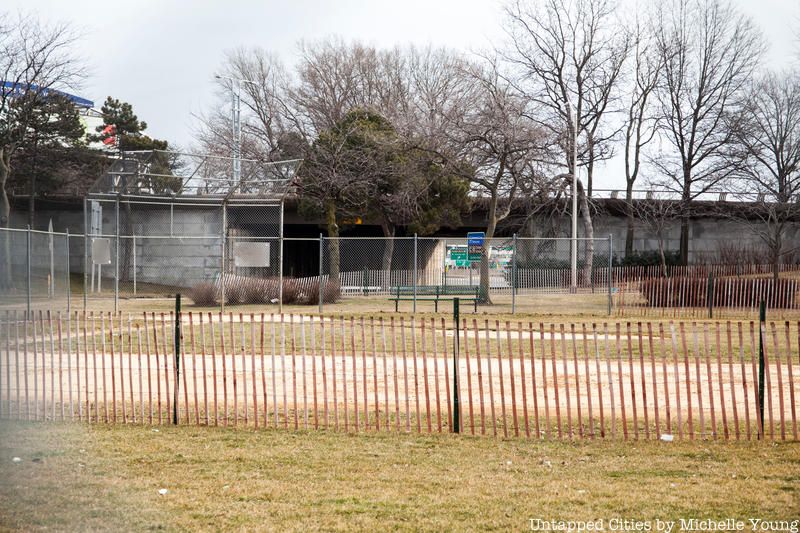
Just south of Federal Circle near the Cargo Area A and JFK Airport Cell Phone Lot is a softball field that very few people have heard of. It is used by a small league formed of employees of the airlines and companies that service the airport, and not open to the public. Foursquare does has a check-in for the ballfield, with a single photograph. In the NYC Aviation forum, one user wrote that the ballfield is the same field Mickey Mantle hit his 1300th home run when the airport was Idlewild. We have not yet verified that claim.
Back when jet travel was glamorous, the architecture of airports was designed to reflect an aspirational lifestyle. In front of the original International Arrivals Building (IAB) was an immense fountain called the “Fountain of Liberty,” a part of the landscaped “International Park.” The pool was 220 feet in diameter, with a rising ramp used as a visitor’s observation deck. You can see some great shots of JFK Airport when it was Idlewild airport in the above 1964 news reel video, shared to YouTube by Pathé (we’ve auto-started the video at 0:39 where the fountain is shown.
According to the book John F. Kennedy Airport by Joshua Stoff, the fountain had 916 nozzles that shot water to a height of 60 feet and was illuminated by 308 lamps placed inside the pool that displayed five colors. Stoff writes, “like Las Vegas, they produced an ever-changing spectacle on a repeating, six-minute cycle.”
Next, check out all 7 of the demolished terminals at JFK Airport. This article collectively written by Michelle Young, Catherine Ku, Jinwoo Chong and Laura Itzkowitz.
Subscribe to our newsletter